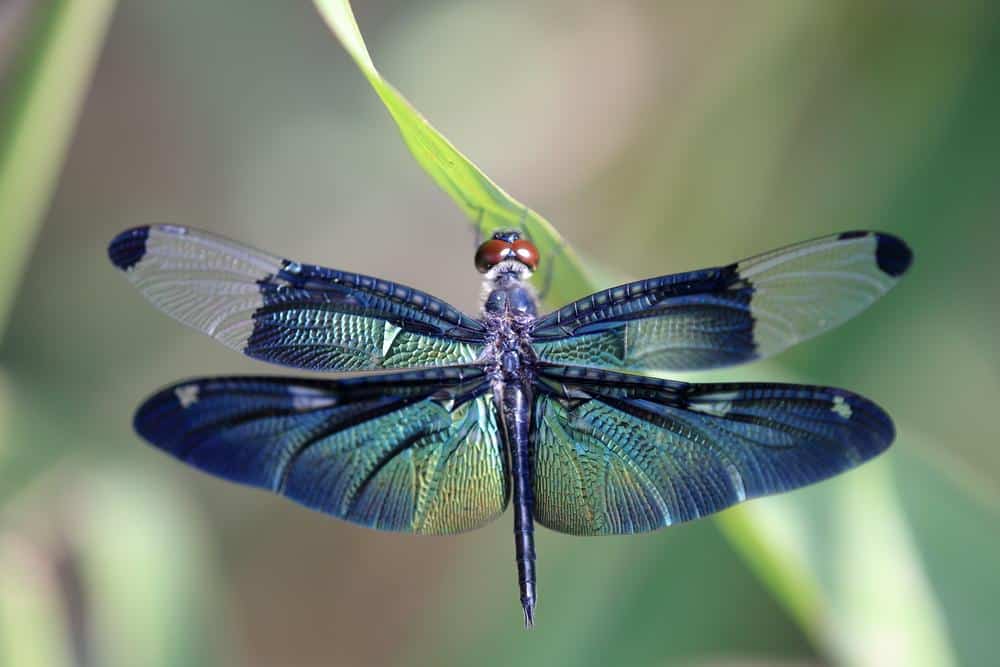If you see a winged insect skimming the surface of a woodland pond, you might generally be cautious. Is it a wasp? A bee? Something else that stings? Or it could be a mosquito, whose bite won’t hurt but will cause an itchy red welt.
But if it’s a dragonfly, or the dragonfly’s related cousin, the damselfly, you have stumbled upon one of nature’s beauties. They are already likable because they don’t bite or sting, but when you consider the myriad of fascinating dragonfly facts, they rate as one of the most efficient and beautiful insects that nature has to offer.
Frequent Fliers
Dragonflies are the most efficient fliers in the insect kingdom. They can fly straight up and down as well as on a linear track. They can eat and mate while flying; in fact they always catch their prey mid-flight, so the continual forward motion is crucial to their diet. And speaking of their diet, dragonflies love to eat mosquitos- they eat up to a hundred per day.
A dragonfly’s head
In Georgia as in other locations, dragonflies tent to haunt places with a diverse aquatic habitat, such as creeks, swamps, or marshes. Great local spots for dragonfly sightings are Sweetwater Creek State Park or the McIntosh Reserve.
Group Dynamics
From May to October, it is common to see hundreds of dragonflies flying together over a hillside or pond. This behavior is thought to be for territorial protection, or a unified search for a watery place to inhabit. When they swarm, they don’t fly in unison, and they don’t stay in their species groups. Instead, their flights are haphazard, with several different types mixed in together. Often, the insects are swarming for food; dozens of species of small insects tend to hover around grassy hillsides and capturing and eating this prey is a common reason for seeing a dragonfly swarm.
Another chief reason to see so many dragonflies together is a migratory swarm. These flights occur during the hot, dry months of summer. It’s common to see hundreds or even thousands of these little machines flying together in orderly fashion to a wetter place. Dragonflies find their mates near water, so it’s a natural inclination to move towards the ponds and lakes.
Swarming is such a fascinating phenomenon that an entomologist set up an online form for reporting dragonfly swarms so she could study their patterns. In the past five years, The Dragonfly Swarm Project has collected thousands of reports of swarms across North America.
Source: The Dragonfly Woman



